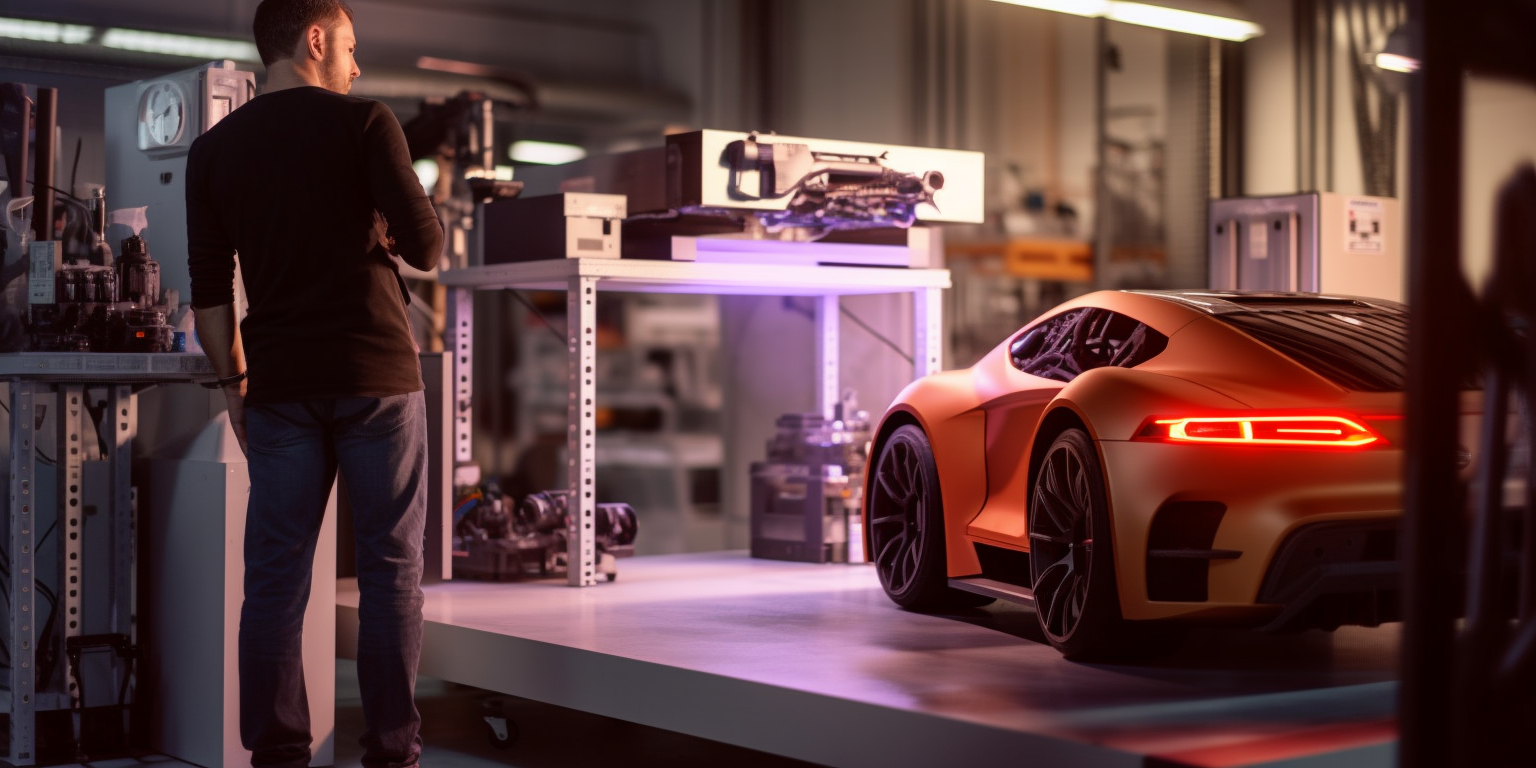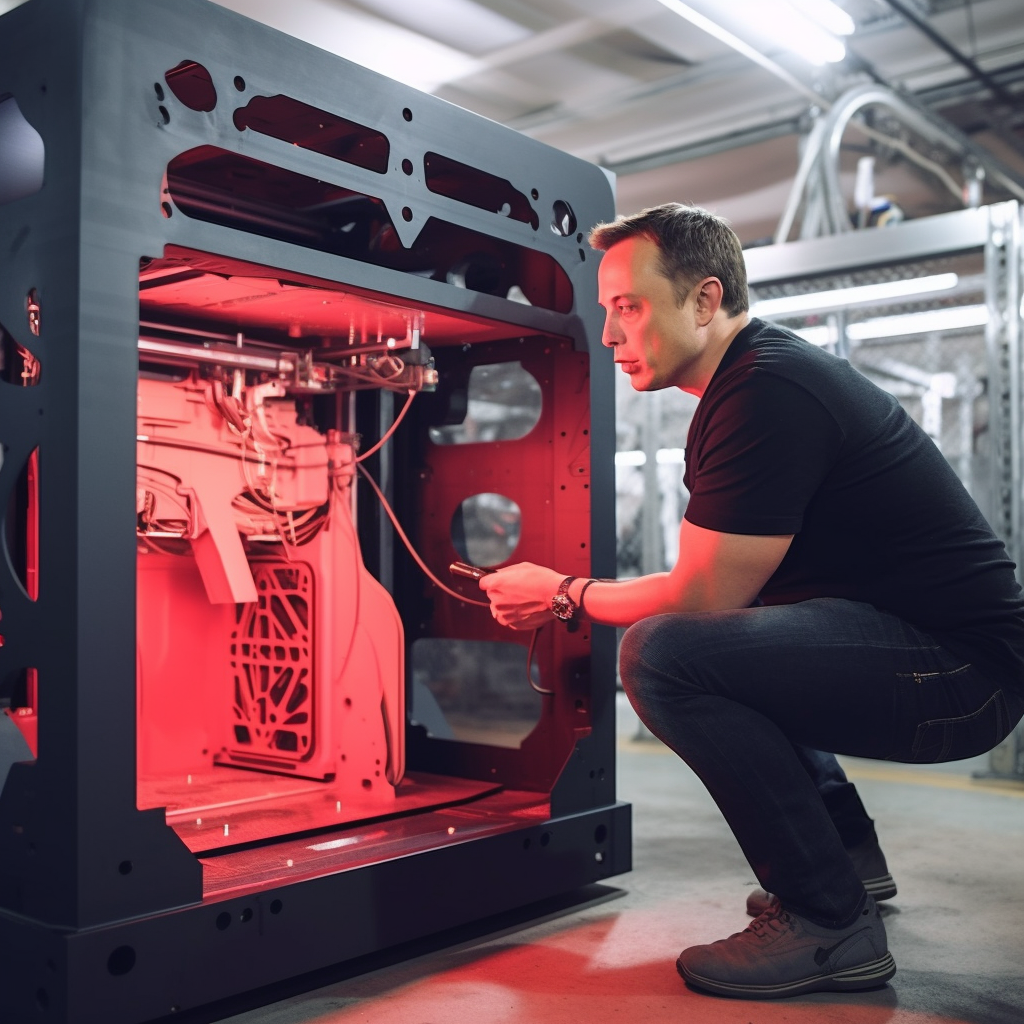Collision Intelligence Blog - November 14, 2023
Embracing 3D Printing in Collision Repair: A Task Force Member’s Perspective

Introduction
As a member of the 3D in Auto Task Force, I have had the privilege of witnessing the transformative potential of 3D printing technology within the collision repair industry. Our journey has been marked by discoveries, challenges, and a profound realization of the need for regulatory oversight. In this article, I offer my perspective on the key takeaways from our report and provide insights into the path forward as we navigate the dynamic landscape of 3D printing in collision repair.
Unlocking Opportunities
The integration of 3D printing into the collision repair industry presents a multitude of benefits that can revolutionize vehicle repairs. One of the most significant advantages is the acceleration of repair processes. With 3D printing, repair centers can significantly expedite the turnaround time for fixing damaged vehicles. This not only satisfies customers’ desire for swift service but also enhances the overall efficiency of the repair process.
Reducing cycle time is another critical benefit. Collision repair centers can streamline their operations, from ordering parts to actual repairs, thanks to the potential availability of parts such as clips, brackets, and repair kits for damaged or missing components such as headlight tabs. Some of these 3D-printed components are already being used in OEM and collision pilot programs focusing on select parts, with the vision to increase scale and range in the near future. These smaller components enable a quicker and cost-effective supply chain solution, allowing for on-demand printing by approved suppliers, instead of the traditional means of the OEM having to manufacture, stock, and ship such parts that create added cost, impact the environment, and slow the car repair down, resulting in delays of days or even weeks. The end goal, as end-use parts printers become more affordable, is industry acceptance and fine-tuning the supply and use of 3D printed parts. Larger collision facilities will house 3D printers and print on demand for such smaller plastic auto parts.
Environmental Sustainability
Embracing 3D printing also aligns with environmental sustainability goals. By repairing damaged parts using 3D technology, repair centers reduce the volume of automotive waste sent to landfills and curb the need for manufacturing and disposing of new replacement components. This eco- friendly approach not only benefits the environment but also resonates with consumers who value sustainability.
Challenges and Obstacles
However, as we delved deeper into the world of 3D printing in collision repair, we encountered a range of challenges that cannot be ignored. Quality assurance remains a paramount concern. Ensuring the consistent quality of 3D-printed parts is pivotal, given the variability in 3D printing processes and materials. Suppliers must invest in stringent quality control measures and testing protocols to meet industry standards.
Material selection is another obstacle that requires careful consideration. Selecting the right materials for 3D printing is pivotal, as suppliers must strike a balance between cost, performance, and environmental impact while ensuring materials meet stringent quality requirements. Navigating the complex landscape of regulatory compliance poses a challenge. Suppliers must adhere to OEM benchmarking and specifications and collaborate with regulatory bodies to establish standards for 3D-printed parts. This requires significant effort and coordination within the industry.
The Imperative for Regulatory Oversight
As we reflect on our journey and the challenges we have encountered, there emerges a clear imperative for regulatory oversight in the 3D printing landscape, especially within the collision repair sector. The need to establish a regulatory body or authority dedicated to setting and maintaining industry standards for 3D-printed parts is not just a recommendation; it is a necessity.
Such a regulatory body would serve several critical purposes:
1. Standardization: It would establish and uphold rigorous benchmarking against OEM 3D- printed parts and set quality standards, ensuring that 3D-printed parts meet safety,
durability, and compatibility requirements.
2. Certification: The body could create certification programs for 3D printing materials and equipment, helping identify reliable suppliers and manufacturers via unique sequential numbering representing the body on approved parts and suppliers.
3. Quality Control: Implementing stringent quality control processes would be within the purview of the regulatory body, guaranteeing the reliability of 3D-printed parts and systems.
4. Collaboration: The body could facilitate collaboration between OEMs, insurance groups, suppliers, industry associations, and regulatory bodies to define and enforce quality standards, ultimately providing a safe and transparent supply chain environment.
5. Consumer Trust: Regulatory oversight would enhance consumer trust by ensuring that 3D- printed parts adhere to established standards and are safe for use in collision repair.
Conclusion: Charting the Path Forward
Our journey as part of the 3D in Auto Task Force has been eye-opening. We have seen the incredible potential of 3D printing to transform the collision repair industry, reduce costs, enhance efficiency, and promote sustainability. However, to fully harness these benefits, we must address the challenges that come with 3D printing, particularly in terms of quality assurance and regulatory compliance.
The establishment of a regulatory body for 3D printed parts in collision repair is not a distant dream it is an immediate imperative. Such an authority would ensure that the industry adheres to the highest standards of safety, quality, and reliability, ultimately benefiting consumers, repair centers, insurers, and auto parts suppliers.
As we move forward, let us embrace the possibilities that 3D printing offers while recognizing the responsibility to create a secure and standardized environment. It is our duty to ensure that 3D printing in collision repair lives up to its potential as a force for positive change, offering efficient, sustainable, and safe solutions to a world in constant motion. Together, we can shape a future where innovation meets regulation, and the collision repair industry thrives in an era of technological advancement.

